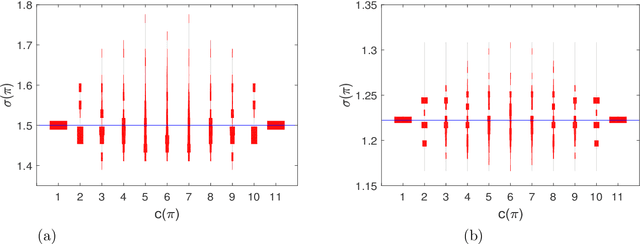Relationships between dilemma strength and fixation properties in coevolutionary games
Paper and Code
Jan 11, 2019



Whether or not cooperation is favored over defection in evolutionary games can be assigned by structure coefficients for any arrangement of cooperators and defectors on any network modeled as a regular graph. We study how these structure coefficients relate to a scaling of dilemma strength in social dilemma games. It is shown that some graphs permit certain arrangements of cooperators and defectors to possess particularly large structure coefficients. Moreover, these large coefficients imply particularly large sections of a bounded parameter plane spanned by scaling gamble-intending and risk-averting dilemma strength.
 Add to Chrome
Add to Chrome Add to Firefox
Add to Firefox Add to Edge
Add to Edge